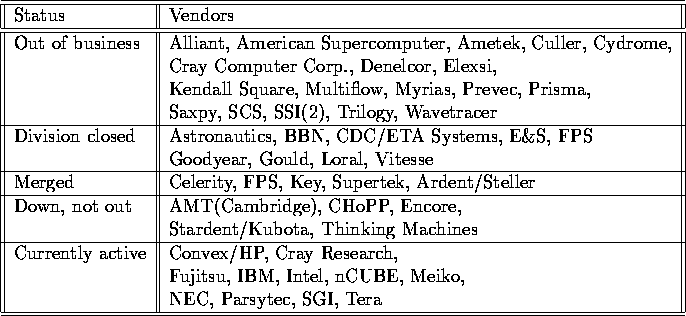
Table 1: Commerical HPC Vendors in the U.S (late 1995)
The rapid transformation of the high performance computing market in the U.S. which began in 1994 continued at an accelerated rate in 1995. With the introduction of powerful new CMOS microprocessors such as the IBM Power2, the MIPS R8000, and the DEC Alpha processors, supercomputing increasingly has moved to CMOS microprocessor based systems. This trend continued in 1995.
1995 was a remarkable year for the TOP500 in two respects: on one hand almost half (246) of all machines on the TOP500 list were installed in 1995, so 1995 was a year of rapid change and turnover of computer equipment. On the other hand, there was a remarkable absence of new product introductions. The new Cray T90, which would have been big supercomputer news a few years ago, made barely an impression on the TOP500 list (only 8 systems installed in 1995). The leading architectures (IBM SP-2, SGI Power Challenge, and Cray C90) are all pre 1995, and had already significant numbers of installations in past editions of the TOP500 list.
Similarly, there is a lack of ``massively" parallel machines. The total number of machines with more than 1024 processors on the list is now eleven. All of these eleven are located in the U.S. Eight of these eleven machines are computers made by TMC (one CM-5 and 7 CM-200s), and probably won't be replaced by similar machines, since TMC is out of the hardware business. There are another 10 machines with processors counts between 512 and 1023 processors, and again all of these are in the U.S. as well.
Thus, the HPC situation in the U.S. can be summarized as follows:
The world wide market for HPC in 1993 was estimated to be about $2.4 Billion, with overall growth of the market by very modest aggregate rate of only 1.4% in five years until 1998. These projections imply a very fierce competition also in the future, since the number of vendors in this relatively small market continues to be too large. This can seen from the list of vendors in Table 1, which is updated from Smaby [11]. The consequences of such a large number of vendors competing for such a small (but highly visible and important) market are widely discussed [10]. Compared to a year ago this table has three companies less in the ``Currently active" category, and no serious newcomers. The other major change was the acquisition of Convex by HP.

Table 1: Commerical HPC Vendors in the U.S (late 1995)
At the same time the federal High Performance Computing and Communications Program (HPCCP) is winding down. After considerable progress has been made as documented in the famous ``Blue Book" [4] the focus of federal programs has shifted more towards the NII (National Information Infrastructure). The discussion about HPC in the commercial and in the government market place continues to be based on beliefs and impressions, and often lacks hard data. Claims in the early years of the HPCC that a Teraflop/s performance on significant applications will come to pass by 1996, is almost certainly not going to happen. However, this was the wrong metric to pursue from the very beginning. It continues to surprise that a field such as HPC that is deemed so critically important to the national agenda lacks almost completely any quantitative assessment of its progress.
There is a possibility that the Tflop/s level will be reached on the Linpack benchmark in 1996. A cooperative agreement between Sandia National Laboratories and Intel will result in the installation of machine with more than 9000 processors in 1996.
Before investigating some of
the data in [7] in more detail, it is important to understand
the limitations
of the TOP500 study. These limitations can be summarized in the past.
In spite of these inherent limitations, the TOP500 report can provide extremely
useful information, and valuable insights. It is more accurate
than many marketing studies, and the possible sources of error discussed
above are probably statistically insignificant, if we consider only
summary statistics, and not individual data. All Mflop/s or
Gflop/s performance figures here refer to performance in terms of Linpack
 .
.
In the analysis of geographical distribution, machines in Canada have been included in the figures for the U.S., and the figures for Europe include all European countries, not just EC members. The other country category includes mostly countries of the Pacific Rim with the exclusion of Japan, and a few Latin American Countries.